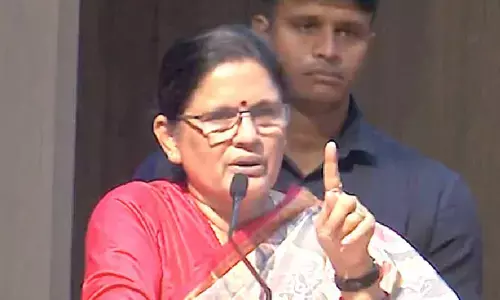Soon, clothes that can 'talk' to devices

Scientists at MIT have incorporated electronics into soft fabrics, potentially making it possible to produce clothing that communicates optically with other devices
Boston : Scientists at MIT have incorporated electronics into soft fabrics, potentially making it possible to produce clothing that communicates optically with other devices. Researchers at Massachusetts Institute of Technology (MIT) in the US embedded high speed optoelectronic semiconductor devices, including light-emitting diodes (LEDs), within fibres that were then woven into soft, washable fabrics and made into communication systems.
This marks the achievement of a long-sought goal of creating "smart" fabrics by incorporating semiconductor devices - the key ingredient of modern electronics - which until now was the missing piece for making fabrics with sophisticated functionality, researchers said. Optical fibres have been traditionally produced by making a cylindrical object called a "preform," which is essentially a scaled-up model of the fibre, then heating it. Softened material is then drawn or pulled downward under tension and the resulting fibre is collected on a spool, according to the study published in the journal Nature.
The "breakthrough" for producing these new fibres was to add to the preform light-emitting semiconductor diodes the size of a grain of sand, and a pair of copper wires a fraction of a hair's width. When heated in a furnace during the fibre-drawing process, the polymer preform partially liquified, forming a long fibre with the diodes lined up along its centre and connected by the copper wires. In this case, the solid components were two types of electrical diodes made using standard microchip technology: LEDs and photosensing diodes.
"Both the devices and the wireas maintain their dimensions while everything shrinks around them" in the drawing process, said MIT graduate student Michael Rein. The resulting fibres were then woven into fabrics, which were laundered 10 times to demonstrate their practicality as possible material for clothing. "This approach adds a new insight into the process of making fibres," said Rein. "Instead of drawing the material all together in a liquid state, we mixed in devices in particulate form, together with thin metal wires," he said.
One of the advantages of incorporating function into the fibre material itself is that the resulting fibre is inherently waterproof. To demonstrate this, the team placed some of the photodetecting fibres inside a fish tank. A lamp outside the aquarium transmitted music through the water to the fibres in the form of rapid optical signals. The fibres in the tank converted the light pulses - so rapid that the light appears steady to the naked eye - to electrical signals, which were then converted into music.


















